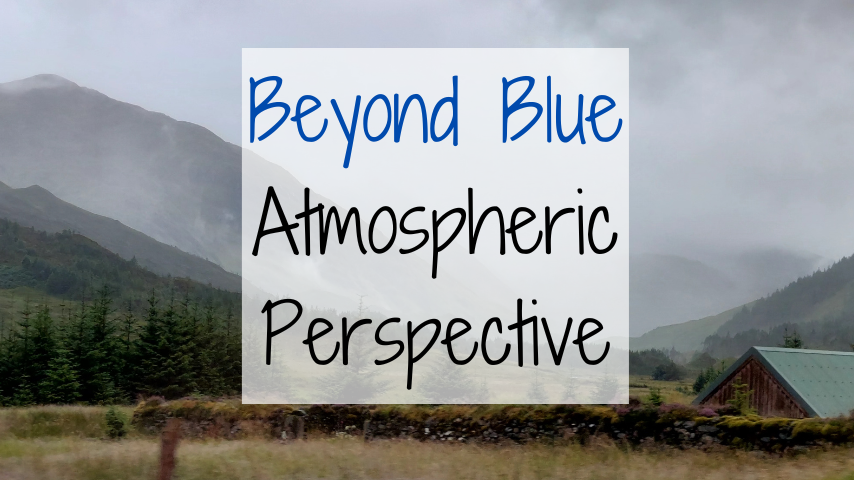Atmospheric Perspective – What is it?
Atmospheric perspective helps us create the illusion of depth in landscape painting. As the land get further away from us the colors get less intense and shift in hue. This is due to the lightwaves scattering off of particles in the sky. Therefore, the more mist or smoke in the air the more atmospheric perspective effect. See this blog post for more: Atmospheric Perspective.
First the Yellows
In the foreground, we have the most colorful and intense of the colors. We also have the greatest value range. If we have the same objects in the foreground, middle and background, we need to make sure that we adjust the colors realistically. There is a simple way of knowing how to do that. It isn’t just adding more blue. Okay, that often works. But it isn’t just that.
The first color to start to drop out is the yellows. If we remove a bit of the yellow from our colors, we will have a realistic shift. Now, you may think, “How do I get the yellow OUT of my color I mixed?” If you cannot do the I Dream of Jeannie blink, I recommend adding more of the other colors to it. We may not be able to subtract, but we can change the ratio by adding more blues and reds.
Next the Reds
The next color to drop out as we move back are the reds. At this point, it is a bit easier to simply mix a tad bit more blue in, and then lighten it up in value with white. You will need to lighten it, as the blue will darken the mix, and your values need to lighten as they move back.
Most Blue
Okay, the post may be titled “Beyond Blue.” But, blue still needs to be there. The farthest away area is the most blue AND the lightest value. If you have a big mountain, you can work in some of the sky color towards the base of the mountain to help increase that illusion of distance. Just a bit will usually do it. You don’t want to create the floating mountain effect. Notice the ridges peaking up out of the fog.
Exceptions
When we have a painting that includes atmospheric perspective and it is close to sunrise or sunset we will have a shift that is more to the orange/pink. The sky can be more yellow at this of the day. The foreground may be very dark because the sun is behind it. On the right side, you can see the very bright orange color on the mountain. This occurs when the angle of the mountain can reflect the color, especially when it is snowy. This is the color right as the sun is about to sink beneath the horizon. Notice that with the three other photos that have more distance shown that they all the values become lighter as the distance increases. Because no matter the time of day, the color becoming desaturated as it bounces off of particles in the sky is still something that happens.
I hope that knowing a bit of the reason why color behaves the way it does in nature will help you apply color theory in your paintings.
Happy painting!




